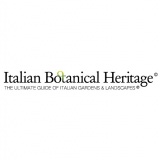
 Italian Botanical Heritage
Italian Botanical Heritage
Italian gardens and parks: Antonio Segni Alpine Garden
- WTI Magazine #152 Jun 25, 2022
-

 Italian Botanical Heritage
Italian Botanical Heritage
The Antonio Segni Alpine Garden is located at the foot of the Dolomite cliff of the Civetta Group, on the southern slope dominated by the imposing and elegant walls of Cima Busazza, Torre Venezia and Torre Trieste. It was founded in 1963 as part of the CAI Conegliano section with the purpose of publicizing the beauty and diversity of the Dolomite alpine flora.
Located in the territory of the municipality of Taibon Agordino in the province of Belluno, Veneto, near the Vazzoler refuge at an altitude of 1,714 m above sea level, it can be easily reached by following one of the many paths in the area, particularly by taking the road from Listolade into Val Corpassa.
The Garden covers an area of 5,000 square meters, and is mainly divided into two sections: the first left to natural evolution, the second proposes the typical environments of the Belluno Dolomites.
The vegetation gradually fades from tree to shrub formations, to alpine grasslands and then to the colonization of scree present at the foot of vertical rock faces. Alpine spruce (Picea abies) and larch (Larix spp.) are abundant in the area.
Where the forest opens up, and in rougher, poorer areas, the dominant species is the mountain pine (Pinus mugo) with its characteristic creeping, prostrate habit. It is accompanied by numerous shrubs: rhododendrons, blueberries, junipers, willows and wild honeysuckles.
On the other hand, in the areas that are still grazed, one can find numerous floristic species that create vibrant patches of color during the flowering period. Within the garden, in addition to the various plant associations, other tree-arbustive species such as beech, alpine laburnum (Laburnum alpinum), bird rowan (Sorbus aucuparia) and numerous willows can be seen.
There are about 180 tree, shrub and herbaceous species housed in rockeries and beds served by nature trails. Notable among the main ones are dolomitic and eastern alpine endemics, such as rock raponzolo (Physoplexis comosa), Carnia bellflower (Campanula carnica), common bonarota (Paederota bonarota), dolomite cinquefoil (Potentilla nitida), dwarf rhododendron (Rhodothamnus chamaecistus) and encrusted saxifrage (Saxifraga crustata). Among the more flamboyant and showy blooms are the St. John's lily (Lilium bulbiferum) and the martagon lily (Lilium martagon).